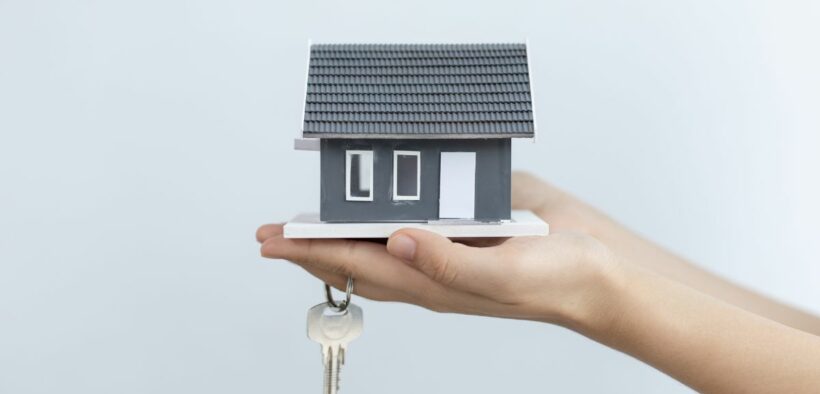Opinion: Not another doomsday prediction for Aussie housing
Share

The recent price fall is the first stage of a skydive: controlled, intentional, and with safeguards in place.
Are declining property values the nail in the coffin for Australia’s property boom?
Hardly.
The recent price fall is the first stage of a skydive: controlled, intentional, and with safeguards in place.
The initial drop is fast and exhilarating. Property values have fallen 8.6% since the start of the RBA’s rate hikes in May. But things won’t last. Without structural shakeups, the Aussie property market will deploy its parachute and slow its fall until it eventually hits the ground. Softly.
We are getting early signs that the RBA will stop lifting rates before lowering them, allowing demand to rebound.
While no economist has a crystal ball, they are all reading the same fortune cookie line: that the economic parachute is nearing deployment. There is a consensus that the cash rate will peak at 3.6% to 3.85% before tapering off in the final quarter of 2023. Signs of quantitative easing are welcome news to weary property owners, whose home equity has been a casualty of the fast rate rises.
If the economists are correct and the cash rate falls in 2023, the gates to financial Valhalla will open. Borrowers will find the banks more generous and willing to lend, letting them bid more aggressively for the right property. The increased competition may result in prices rising this year.
You can almost hear the collective sigh of relief from property investors.
If prices rise in 2023, the peak-to-trough fall would be much lower, at around 7% instead of 15-20%. This would dampen the severity of the property downturn and give us the foundation for solid growth into the future. At the RBA’s call, the parachute is about to launch, and the Australian property market will slow its descent.
Our next safeguard is migrants. With new entrants to the country, demand will stay red hot into the new year.
Australia has one of the most richly diverse populations in the world, and that isn’t about to change.
As our borders open to migrants and our policy settings become more open, we are in store for a surge of new entrants. This is another major property parachute at our disposal. Migrant demand will slow the property price plunge with a needed demand boost.
The government’s new immigration policy will see up to 300,000 migrants enter the country in 2023. It’s a hit of adrenaline for the property market, and it couldn’t come at a better time. By increasing the number of people demanding property, the price goes up. It is the classic rule of scarcity.
This applies to both renters and property buyers. An increase in short-term occupancy floods the rental market with new seekers, lifting occupancy rates and boosting landlord revenues. Permanent migrants go one step further. As they want to settle in Australia, they join the buyer pool for houses and units and increase competition. This raises the stakes on each purchase and results in a price uplift.
The final part of the skydive can go two ways depending on policy: a slow and controlled descent or an abrupt emergency landing.
The slow and controlled way to lift property prices is financial incentives – like negative gearing.
What does negative gearing do for house prices?
It provides a tax incentive for Aussies to own multiple investment properties, driving up demand for property in desirable locations. When a property is negatively geared, any losses can be deducted against the owner’s income, including if rental returns are lower than interest repayments. This allows investors to access a capital gain on a property in the long term, even if the property is not turning a profit in the short term. Negative gearing fuels house price inflation, creating an incentive to hunt for capital gains. Retaining this policy helps house prices recover and retain their edge.
On the other hand, if housing prices do not return to normal as quickly as the government would like, it will intervene. Think of it like a parent pulling their child mid-tantrum out of a store.
If prices look set to tumble and the property market teeters, the RBA will begin to aggressively lower rates. It understands that most Australians’ wealth is tied up in property (including super) and will not allow this to be erased overnight. This will come alongside expansionary government policy. It will release building grants, and first-home buyers schemes, and try its best to throw money at prospective buyers.
This inflationary logic led the NSW government to substitute stamp duty for an annual land tax, which helps first-home buyers’ initial deposit go further to a higher-value home.
These measures will lift the demand and keep the property market afloat with higher prices.
Bringing it back to our skydiving analogy, the property market is not falling blindly.
Many structural and policy safeguards protect the Aussie property market from a multi-trillion dollar nosedive. From migration to negative gearing to central banks, the tools at our disposal are far-reaching, and they’ve worked for decades. It has resulted in property taking the crown as Australia’s premier store of wealth.
If we take a step back, we can find some welcome perspectives.
The free fall is just one part of a much bigger process with many protections and stages that will end in a cushioned landing. Our task is to ride out the fall.
Related: Rapid increases in interest costs exacerbate housing issues and create mortgage prisoners
Ulrika Lobo is the host of inDebt with Ulrika Lobo (Spotify podcast), and the Director of Sparrow Loans and Blue River Finance. She believes in progress and integrity, disrupting how people approach lending to drive greater results for borrowers and investors. She was named a finalist in the Director of the Year Category for the Women in Finance Awards in 2022 and won the Western Sydney Women's Entrepreneur of the Year award in 2021.

























